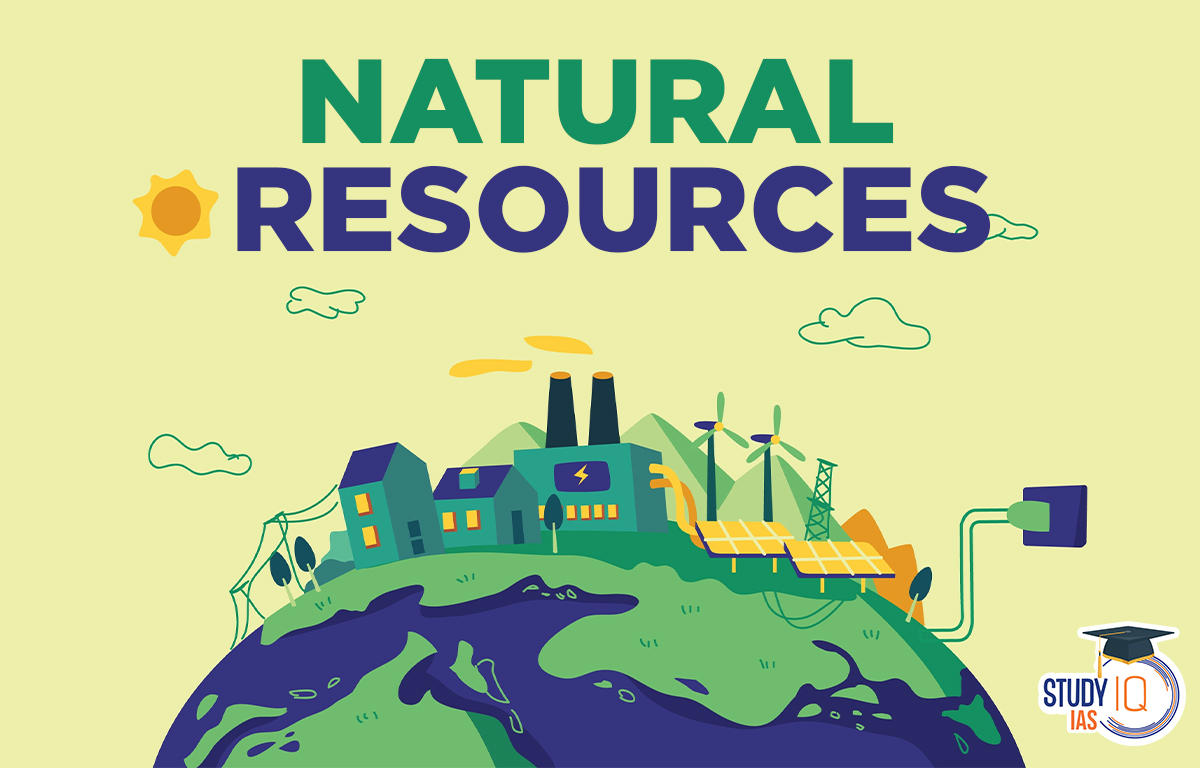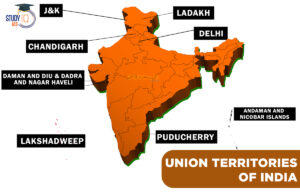Table of Contents
Natural Resources
Natural Resources are the resources that are created naturally from materials found in the environment. Air, water, sunlight, soil, rock, plants, animals, and fossil fuels are examples of natural resources. Natural resources are materials that come from the earth, including food, textiles, metals, water, fertilisers, and geothermal energy. Natural resources are things that happen naturally and are beneficial to people or might be useful in the future under possible social, economic, or technological conditions. The natural sciences have historically had a monopoly on the study of natural resources.
Natural resources are things that occur naturally and are essential for human survival and development. The natural sciences have long dealt with natural resources. These are naturally discovered or created environmental resources. Natural resources include, among other things, air, sunlight, water, soil, rock, plants, animals, and fossil fuels. You will learn about India’s natural resources in this article, which will help you with your geography study for the UPSC Civil Service exam.
What are Natural Resources?
Resources classified as natural exist when no human activity is present. This includes sources of value like utility for business and industry, aesthetic value, scientific interest, and cultural value.
It includes everything on Earth, including the sun, the atmosphere, the oceans, the land, and all the minerals, plants, and animals. Natural resources are things that happen to exist and are regarded as valuable in their original form. The amount available and the demand for it determine its value.
Natural Resources Types
Depending on their place of origin, natural resources can be grouped in many different ways.
- Biotic Resources
- Abiotic Resources
A biotic resource is any biological component of the environment. Forests and forest products, crops, birds, animals, fish, and other marine life are examples of biotic resources. These resources are renewable because they replenish and reproduce themselves. Although they are biological resources, coal and mineral oil cannot be replenished.
Abiotic resources are any environmental components that are not biological. Land, water, air, and minerals like iron, copper, gold, and silver are examples of abiotic resources. They are limited and non-renewable since they cannot be reproduced or regenerated. Based on their rate of recovery, natural resources can be divided into the following groups:
- Non-Conventional
- Conventional
There are two categories of natural resources depending on availability:
- Renewable resources are those that are perpetually available and can be utilised in a variety of ways. Examples include a forest, wind, and water.
- Non-renewable resources are those whose supply is finite owing to their non-renewable nature and whose availability might diminish in the future. Minerals and fossil fuels are a few examples.
Natural Resources Examples
The following are the Top 5 Natural Resources such as:
| Type | Details |
| Air | For all plants, animals, and humans to exist in our world, the air they breathe must be clean. Therefore, action must be taken to lower air pollution. |
| Water | Only 2% of the water on Earth, which covers 70% of the planet, is fresh water. It is important to take steps to educate the public and control water use. |
| Soil | Different particles and nutrients make up soil. It promotes plant growth. |
| Iron | Silica is a mineral that contains iron, which is utilised to make powerful weapons, vehicles, and construction materials. |
| Forests | Forests maintain the world’s environment and offer clean air. Trees are taken down for housing and building projects. |
Natural Resources List
Natural resources are materials or substances that occur naturally in the environment and can be used for economic gain. Here is a list of some common natural resources:
| Natural Resources | Details |
| Water | This includes freshwater bodies like rivers, lakes, and groundwater, as well as saltwater bodies like oceans. |
| Minerals | These are naturally occurring substances that are solid and inorganic. Examples include gold, silver, iron, copper, coal, and diamonds. |
| Forests | Forests provide various resources such as timber, medicinal plants, and habitats for diverse flora and fauna. |
| Fossil Fuels | These include coal, oil, and natural gas, which are formed from organic matter over millions of years and are used for energy production. |
| Air | While it might seem abundant, clean air is a crucial natural resource for sustaining life and supporting ecosystems. |
| Soil | Soil is essential for agriculture and provides a medium for plant growth. It also hosts a variety of organisms and plays a role in nutrient cycling. |
| Fish and Wildlife | These include living organisms such as fish, birds, mammals, and other wildlife that are harvested for food, recreation, and other purposes. |
| Renewable Energy Sources | Resources like sunlight (solar energy), wind, geothermal heat, and biomass can be harnessed for energy production. |
| Biodiversity | Biodiversity itself is a natural resource as it provides genetic diversity, ecosystem services, and resilience to environmental changes. |
| Land | Land resources include areas suitable for agriculture, urban development, conservation, and other purposes. |
| Metal Ores | These are naturally occurring compounds from which metals can be extracted, such as bauxite for aluminum and hematite for iron. |
| Freshwater Resources |
Besides water bodies, freshwater resources include aquifers and underground reservoirs. |
| Geothermal Energy | Heat from within the Earth can be harnessed for various purposes, including electricity generation and heating. |
| Renewable Biomass |
Biomass resources include wood, agricultural residues, and organic waste, which can be converted into biofuels or used for heating and electricity generation. |
| Sunlight |
Solar energy is a clean and renewable resource that can be harnessed using photovoltaic cells for electricity generation and solar thermal collectors for heating. |
Natural Resources Importance
Natural resources are of great importance to human societies for many reasons. Here are some key reasons why natural resources are important:
- Economic Importance: Many natural resources are essential for economic development. For example, minerals and fossil fuels are crucial for industry and transportation, and timber is important for the construction of buildings and furniture. Agriculture is also dependent on natural resources, such as water and fertile soil, which are used to grow crops.
- Energy Production: Natural resources are also used to generate energy. Fossil fuels, for example, are burned to produce electricity, while wind and solar energy are harnessed to generate clean energy.
- Environmental Importance: Natural resources are important for maintaining the balance of ecosystems and providing habitats for wildlife. Forests, for example, are home to many plant and animal species, and they also help to prevent soil erosion and regulate the climate.
- Social Importance: Natural resources can provide a source of livelihood for many people. For example, fishing and forestry provide jobs and income for many communities around the world.
- Cultural Importance: Natural resources also have cultural significance for many societies. For example, indigenous cultures often have a deep connection to the land and rely on natural resources for their traditional way of life.
Natural Resources UPSC
Natural resources are things that occur naturally and are essential for human survival and development. The natural sciences have long dealt with natural resources. These are environmental resources that have been found or developed naturally. Natural resources include, among other things, air, sunlight, water, soil, rock, plants, animals, and fossil fuels. You will learn about India’s natural resources in this article, which will help you study geography for the UPSC Civil Service exam.
| Other Important Articles | |
| Manganese Ore | Nuclear Power Plants in India |
| Hydropower Plants in India | Mineral Resources |


 Revolt of 1857 for Independence, Causes,...
Revolt of 1857 for Independence, Causes,...
 Indian Sex Ratio 2024 State-wise, NFHS-5...
Indian Sex Ratio 2024 State-wise, NFHS-5...
 Union Territories of India with Capital ...
Union Territories of India with Capital ...

















